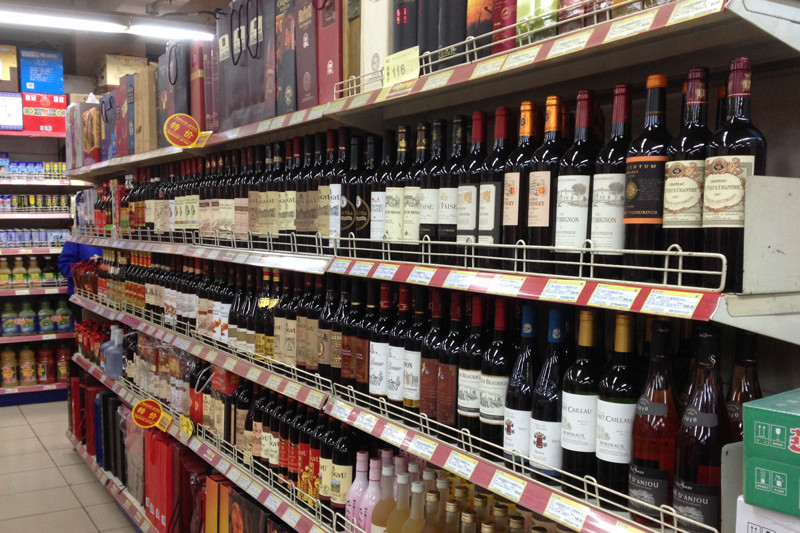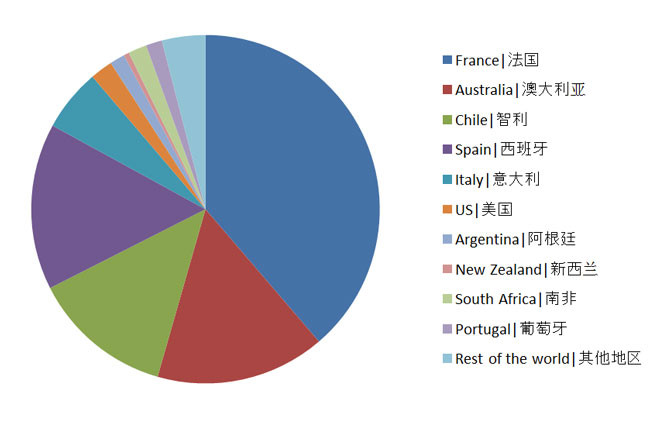Demei's View - Wine Communication from a Chinese Winemaker
Since the beginning of 2015, China’s total year-on-year wine import value and volume has been increasing significantly. During the first 10 months of 2015, the total value of imported bottled wine has gone up by as much as 37.5% compared to the same period last year.

Image: the total volume of imported bottled wine during the first 10 months of 2013, 2014 and 2015
Source of figures: Chinese customs
After two years of gloomy sales, in 2015 imported wine sales appeared to increase considerably in volume. However, the trade is having mixed feelings about the change.
The shared opinion is that from the latter half of 2012 wine consumption in China fell due to the Chinese government’s austerity policies. Though the figures of imported wines recovered slightly at the end of 2014, the increased rate was much lower than in the years before the austerity policies kicked in. Many in the trade had serious problems sustaining their businesses.
In early spring of 2014, at a Shanghai wine forum I made a speech, pointing out that government-driven wine consumption is by no means healthy and does not follow the natural development pattern of the market.
It’s beneficial for those who intend to grow their business by the market rules now government driven consumption is fading away. The changes in government policy mean that those distributors who profit considerably from government connections and direct purchases from officials are gradually excluded from the market.
However, by taking a closer look at those wine companies, which were either made bankrupt or had to exit the market during 2012 to 2013, you will notice that austerity policy wasn’t the main reason for their misery.
Many jumped at the opportunity of economic development brought by the 2008 Beijing Olympics and entered the wine business (before the 2008 Olympics, many investors believed that the sports event would significantly boost wine sales).
Though this expected new era for the wine industry didn’t come with the Olympic Games, at the end of 2008 the Chinese government invested an extra CNY 4000bn to stimulate the economy, and the wine trade gained its own share.
Thanks to the extra investment, the wine trade in China boomed like never before. However, the prosperity was not fully supported by real market needs, and as soon as the central government changed its policies, many distributors dropped off from the market.
Now it is widely believed that the market has been adjusting in the last two years, and the left-over stocks should have gone by now.
During the period of adjustment, the Chinese wine trade started to pay attention to the needs of mass consumers, rather than only chasing after the high-end grand crus. The reduced average price of imported wines seems to support this trend.
I have spoken to many imported wine distributors in Shenzhen, Shanghai and Beijing, and they all agree that the sales of mid-to-lower range wines have increased significantly. One of the distributors even predicted optimistically that their annual sales should double by the end of this year. Is wine consumption in China really recovering?
On the significant growth of import volume this year, it’s worth noting an alternative opinion; during 2013 to 2014, although many importers were forced out of the market, plenty of new players joined, many of whom sell their wines through online shops.
These distributors hold funds from venture investors and the stock market; therefore they can operate with an enormous amount of cash. A common feature of their business model is that they sell produce in bulk and at a low average price. Their presence matches the dropping average price of China’s imported bottled wines.

Image: the average price of China’s imported bottled wines during the first 10 months of 2013, 2014 and 2015.
Source: China customs
As a matter of fact, the overall performance of the food and drinks business reflects the truths behind import figures and market trends to some extent.
During 2012 to 2013, many high-end and luxury restaurants were either turned into other businesses or shut down with wine sales following that trend. Today, though more and more restaurants have shifted their focus to the general public and lower-end consumption, the entire trade is far from recovered and wine sales are no exception.
No matter what, the trend of wine consumption is always influenced by the economic environment of the country. While the overall economic development of China is not improving significantly, how can wine consumption grow on its own? Let’s wait and see—after the busy sales season of Spring Festival, everything should become clear.
My warnings are also for the producers; don’t get overly optimistic by the temporary boost of sales. Any ups and downs in sales that are not supported by real market needs are equally harmful to the producers—unless you’re still trying to get rid of your left over stocks.
(Translated by Sylvia Wu)
Translated by Sylvia Wu / 吴嘉溦
All rights reserved by Future plc. No part of this publication may be reproduced, distributed or transmitted in any form or by any means without the prior written permission of Decanter.
Only Official Media Partners (see About us) of DecanterChina.com may republish part of the content from the site without prior permission under strict Terms & Conditions. Contact china@decanter.com to learn about how to become an Official Media Partner of DecanterChina.com.









Comments
Submit